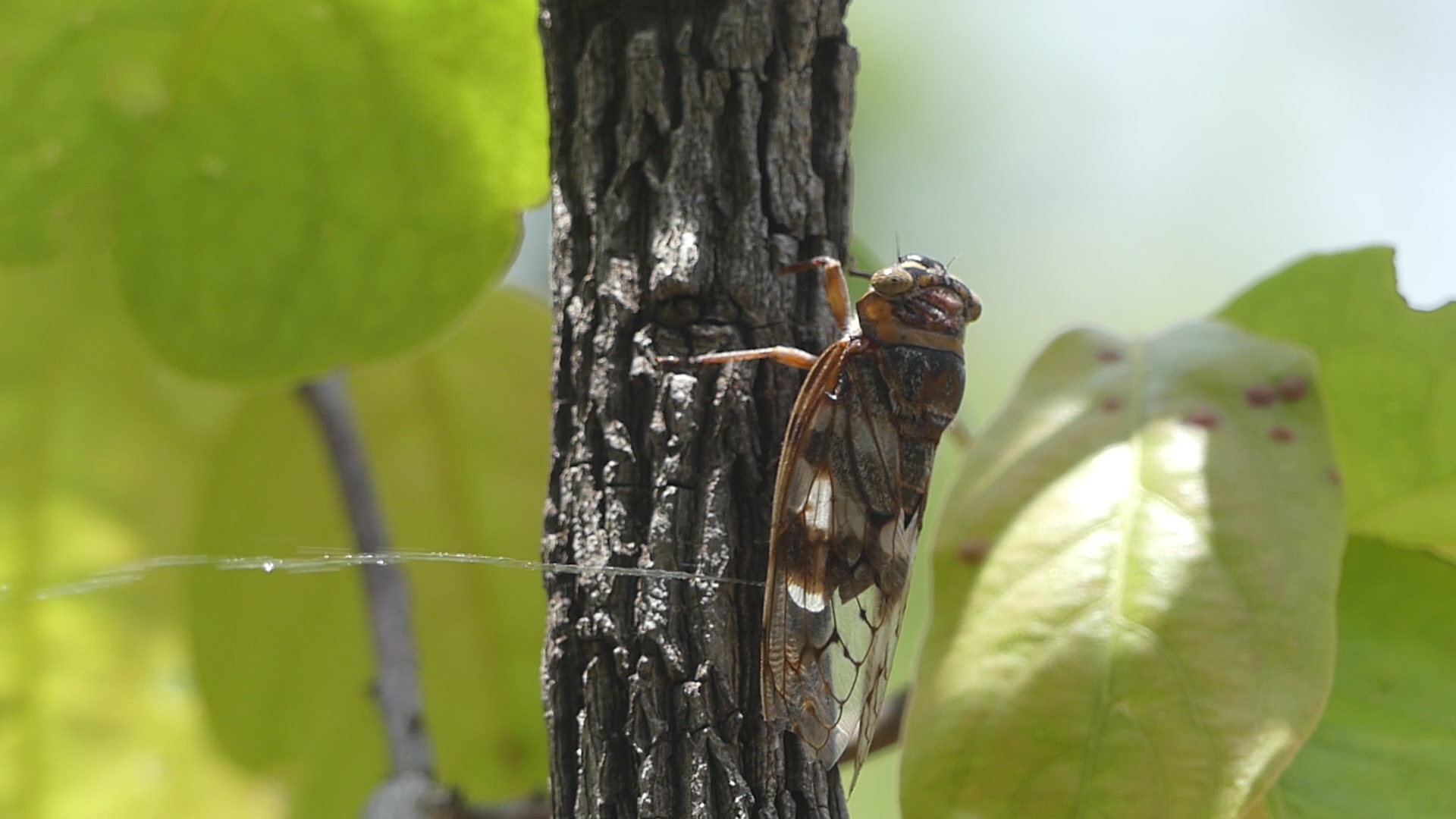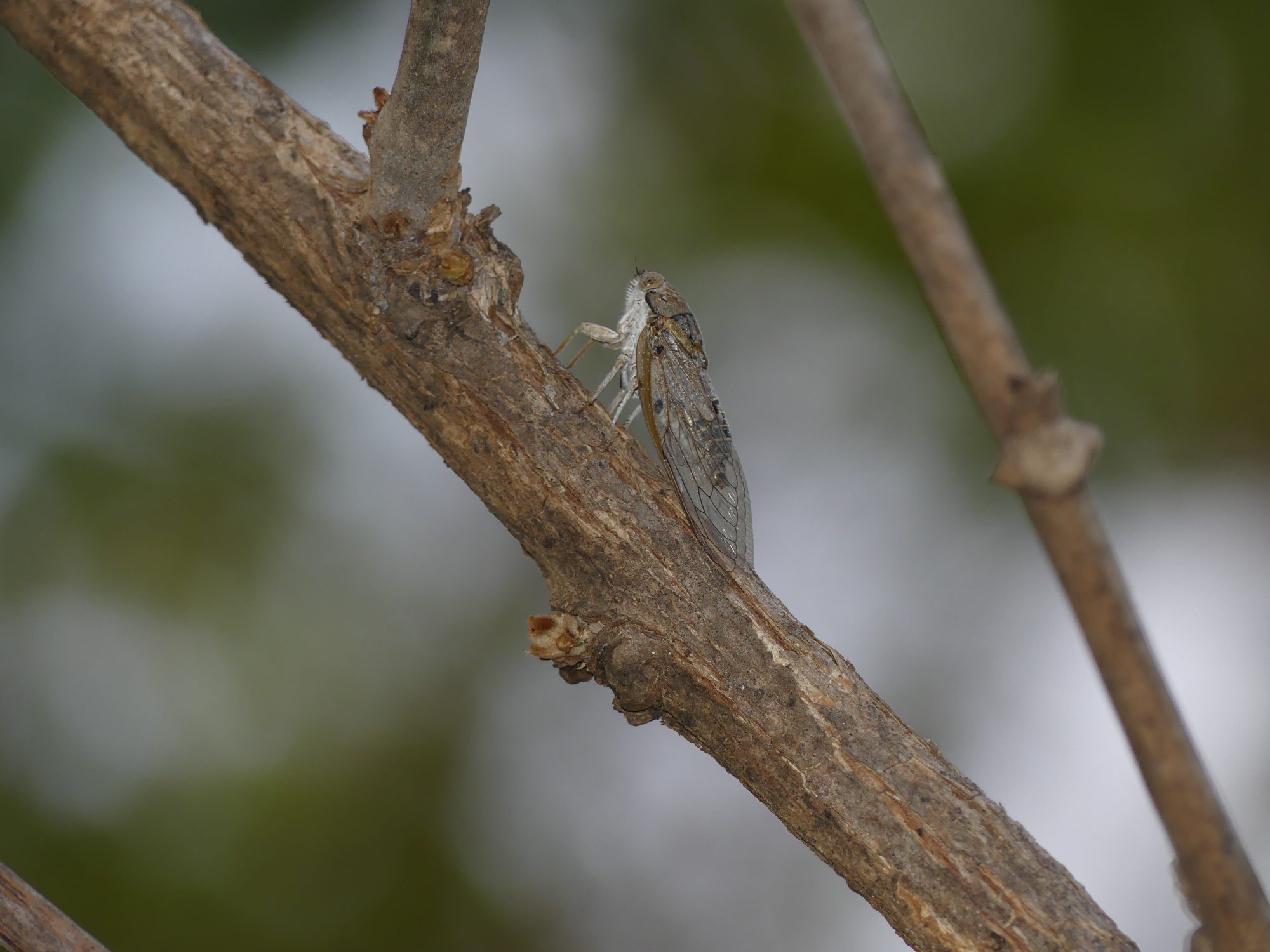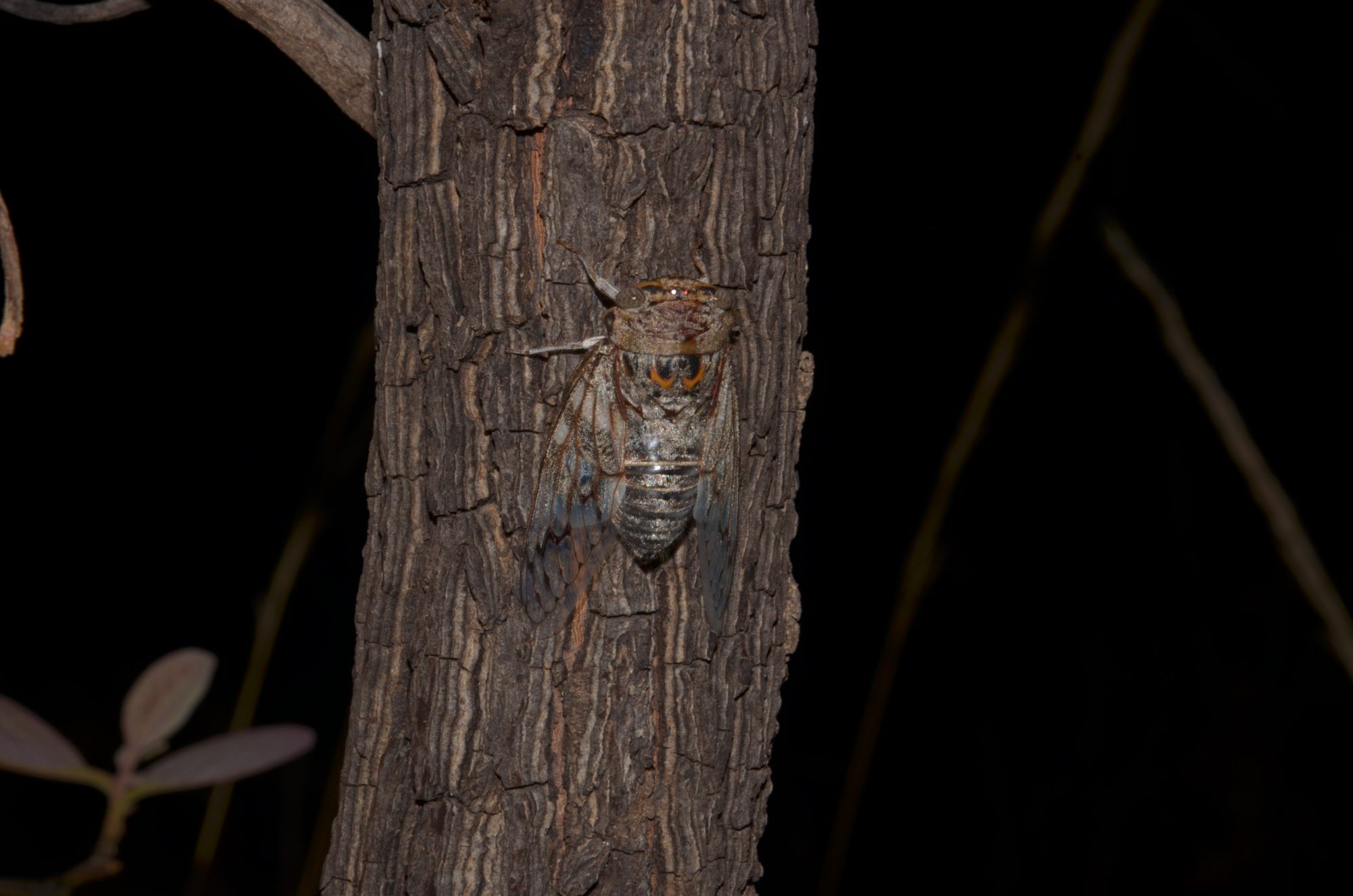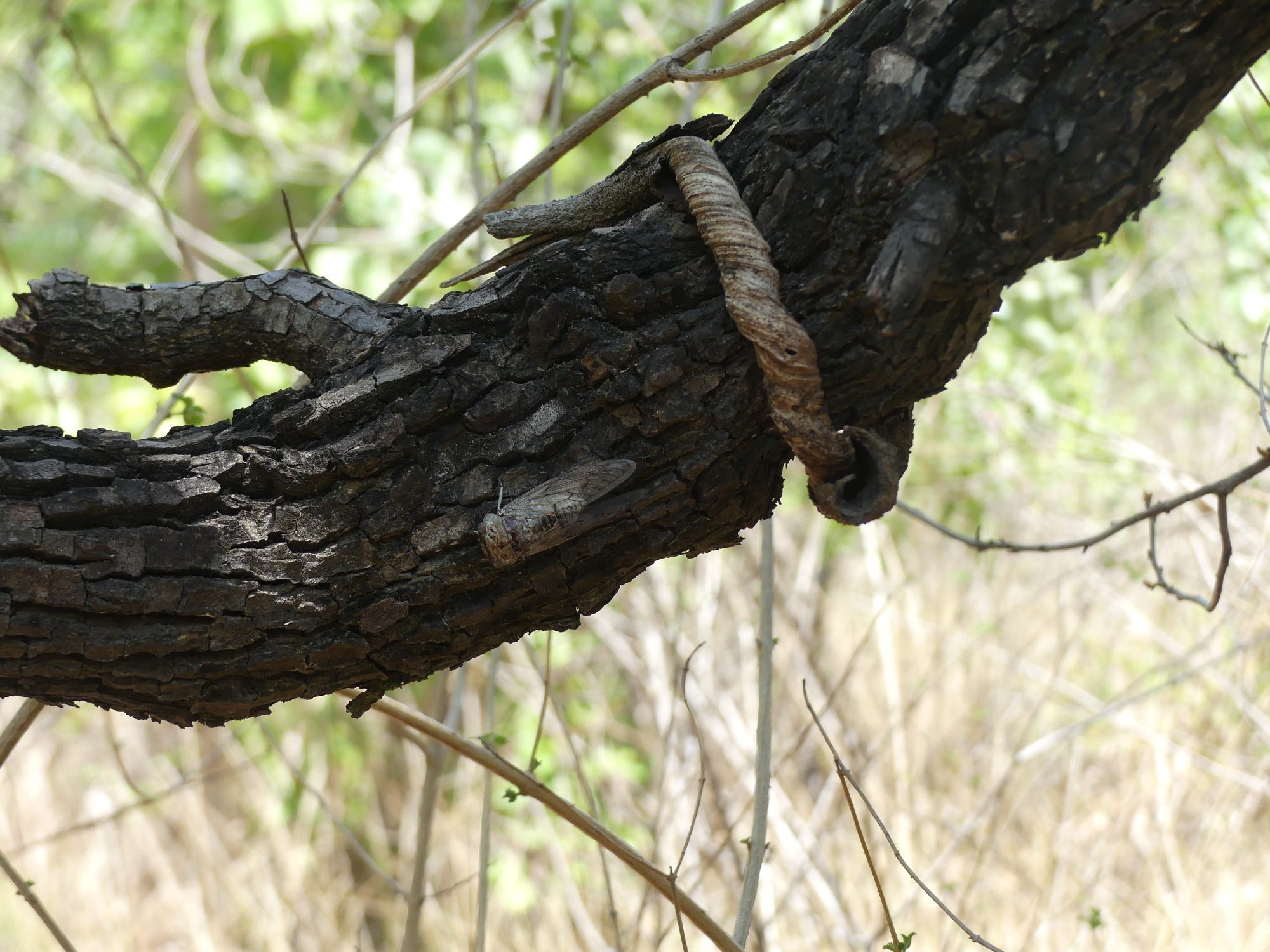Imagine a wedding proposal by a groom with a loud monotonic message of love, would she accept him? Yes, if he was a Cicada! He has crawled out of his gown from the last nymphood and stood up on the dais of a tree trunk for his once-in-a-lifetime event. This event is timed particularly in summer when he along with a million others of his kind assemble within a few acres of such wedding halls to sing their love song.
Cicadas have contested among the loudest insects and won the title by reaching over 105 decibels in some species. Most singing congregations are formed by one species. One such was of Platypleura species’ that have brilliant black hind-wings veined with striking red bases. These Cicadas aren’t louder than the less numbered Platypleura basialba which too have beautiful wing patterns and greenish wash to their body. Although they sing together here in Satpura, they may have different frequencies to their choir.
Unlike crickets that rub their body parts to produce their song, Cicadas use special instruments called timbal in their abdomen, these are like the metal clickers we made a racket out of as kids at any conversation. Had you clicked it 400 times a second your first girlfriend would have been a Cicada! Perhaps she will find another Cicada whose timbal buckles the muscles in and out at 400 buckles per second. This is amplified tenfold on ribbed timble plate to compose the love song. This song resonates in an air cavity in their abdomens to send the message to their love bug. Such messages are whined by millions of male Cicadas putting a passing tractor’s noise to shame.
In such numbers there is safety by giving predators a satiation, especially to Indian Rollers, Drongos and Shrikes who are known to make use of such abundance. A few would be persecuted by Garden lizards, agamas, wasps and spiders who wait for this bounty. The periodic Cicadas that emerge once in 13 or 17 years are Magicicadas of North America. This emergence could deregister any predator’s memory of anticipation. However most Cicadas emerge once in 2 to 6 years.
Here in Satpura, Platypleura sp may emerge and when they do, these true-bugs molt a few feet above on plants. Either for defense or for alarm they squirt the sap liquid from their anus when anyone passes near their ceremonial gathering. Trust me it is tasteless.
Interestingly the Cicadas’ highest assemblage were on bright barked trees like Axle wood, Dhobin, and Kadam trees. We sung into scientists’ ears if this is a strategy employed by grooms to stick out of camouflage and present themselves for the lady Cicada or is it an association with specific tree sap or would pale bark aid the hot-blooded Cicada to regulate their body temperature during their musical sessions.
As adults the Cicadas suck the tree sap using a hard straw from the choice of trees. But females have another straw at their rear to deposit her rice grain like eggs into tree barks by slitting. The song must be heard in a day or two to mate successfully and rest in peace forever. The eggs hatch in the slits made by their mother and feeds their first meal of sap liquid in that groove. Then they drown under the ground up to 8 feet and feed on the pipelines of trees for minerals and water. Here they develop through several stages of nymphood for the next 2 to 17 years depending on the species. And then comes one summer, and that particular day for a male imago to cast his gown and sing that very groom’s song of love.















Recent Comments